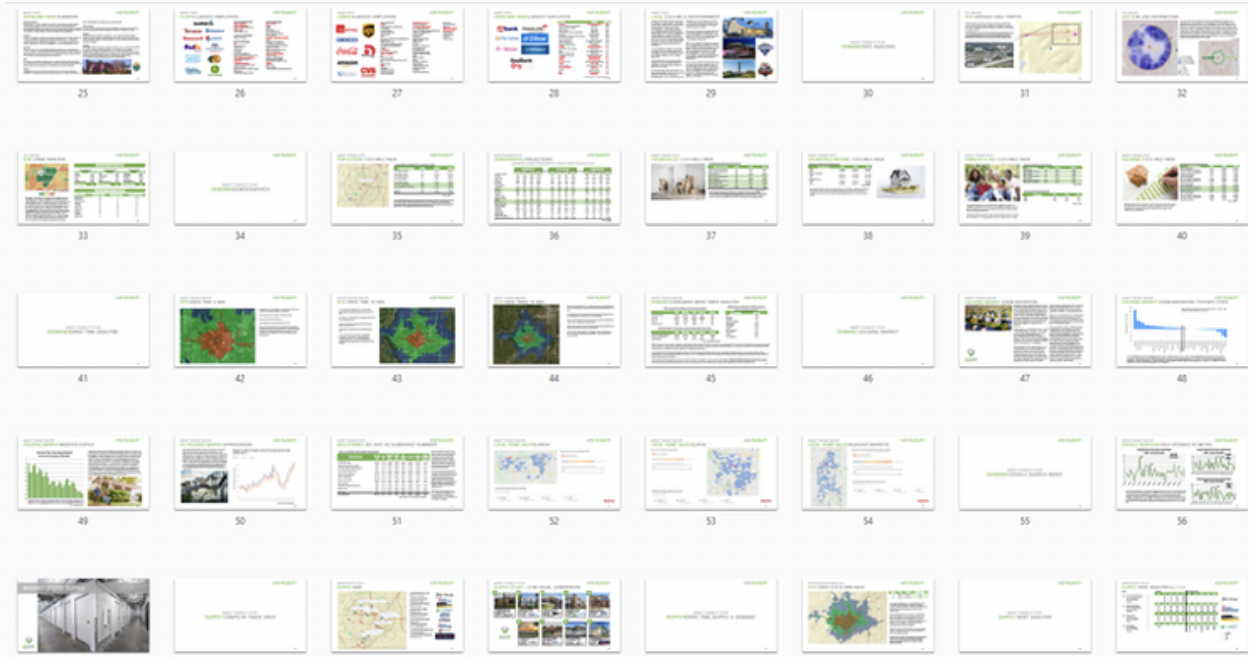
This post is the fifth in a series of articles entitled: “Six Days of Feasibility” designed to educate the reader on the world of Feasibility Studies. Over the next 2 days Jay Garlick of GDP Feasibility will address the following:
Day 1: See the End from the Beginning: What are Feasibility Studies?
Day 2: Don't Make Business Risky: Why a Feasibility Study?
Day 3: Self Storage = Cash Cow: How a Feasibility Study Makes You Money?
Day 4: Buyer Beware: Why Not all Feasibility Studies are the Same?
Day 5: Get You in the Game: What Do You Do with a Full Feasibility Study?
Day 6: Deal Makers, not Deal Breakers: Do You Have Someone to Walk the Path with You?
I remember the first time I surveyed the offerings of those that provided feasibility studies to the self-storage industry some years ago. While it was clear that some made significant efforts in research and analysis, it was plainly obvious that there were very few that organized their work in a way that made it digestible to any reader and further it was very clear that the studies were not very professionally presented or graphically pleasing. 
A feasibility study is not just a document for making decisions, it is also when it reflects a "go" decision for the project, should afford the client an opportunity to put their best foot forward in persuading other stakeholders to get on board. Professionally put-together materials have the power to make an impression with a bank, investor, boss, or partner instantly. That impression is a trust builder that pays dividends and makes you money. In other words, they are "high leverage" and worth investing in.
It's been our experience that when trust is high, conversations are easier, persuasion is faster, deals are struck and terms are better.
We follow the following principles for professionalism in our deliverables:
From our experience and expertise, GDP Feasibility uses a proprietary metric-based approach to determine our recommendations to our clients. We then create a best-in-class high-leverage document that is more useful than any in the industry for engaging and persuading stakeholders to work with our clients.
Up Next: Day 6: Deal Makers, not Deal Breakers: Do You Have Someone to Walk the Path with You?
Who is Jay Garlick?
A self-storage developer himself, Jay Garlick is the Principal at GDP Feasibility and Partner/CEO of Greenscape Development Partners which specializes in self-storage development nationwide. Garlick began doing feasibility studies in 2004. Since then he has done studies on over 400 sites in the United States. Jay has a Masters Degree in Real Estate Development (MRED) and will soon finish a second in Masters in City and Metropolitan Planning (MCMP). Garlick has developed and or entitled his own projects coast to coast in UT, WA, MO, KS, and VA. Garlick can be reached at jay@gdpfeasibility.com. For more information please visit www.gdpfeasibility.com.